By incorporating native and edible plants into her landscape designs, Cassidy Need ’20 is doing her part to sustain the planet—one garden at a time.
By Marybeth Reilly-McGreen
The summer day is shimmering hot, its stillness unbroken but for the buzzing of dog-day cicadas. Cassidy Need ’20, owner of sustainable gardening company Native Edible Designs, is standing in a client’s garden and making a case for a method of gardening that produces far more than just a pretty view. This is a garden that gives back, a garden that sustains species essential for the planet’s survival.

The garden is in full late-summer glory. Asparagus, now gone to seed, sports delicate bell-shaped blooms of pale yellow. There are tangles of star-like squash blossoms. And the vibrance of the black-eyed Susans approaches Technicolor.
At the moment, though, Need’s attention is focused on a monstrously ugly tomato hornworm. It’s green—the shade of the Wicked Witch of the West. This is a mature hornworm, 4 inches long, wide as a panatela cigar, with five pairs of fleshy, stubby prolegs. On its back are white “V” markings atop what appear to be tiny black eyes. Supersized, the hornworm could headline a horror movie.
Need does not reach for pesticide, nor does she pluck the pest from the plant. The garden is designed to dispatch with such marauders without human or chemical intervention. Some plants’ pollen attracts a useful predator of the hornworm, she says.
“One of the cool things I’ve seen in having pollinators around is that they attract a wasp that will lay its eggs inside of the tomato hornworm, and the larva eats the worm from the inside,” Need muses. “It’s kind of creepy, but effective.”
Need is proud of the fact that virtually every plant here performs a service.
Sustainable, organic gardens are Need’s passion. Though beauty and bounty abound in the acreage of this Exeter, R.I., garden, one of the landscapes she manages, Need is equally proud of the fact that virtually every plant here performs a service. No pesticides are used in the garden at any phase of its life cycle. No plastic netting or fencing is used, either. Natural fiber baskets protect the lettuce from the rabbits. Grass clippings are repurposed as mulch. The plate-sized white flowers of hibiscus plants attract insects that pollinate the vegetables.
It is a garden that even benefits the wild areas surrounding it, as the pollinators it draws are indiscriminate, depositing pollen on cultivated and native plants alike.
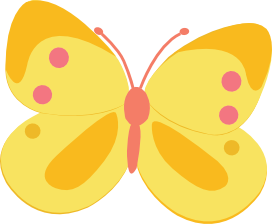
Need was an undergraduate studying business at Northeastern University in Boston, Mass., when she developed an interest in food systems. “I made a big shift and learned how to grow food,” she says. She took time off from school to work on several local organic farms. Eventually, she enrolled at URI, where she earned a Bachelor of Science degree in plant sciences from the College of the Environment and Life Sciences.
In the process of working and studying, Need developed an interest in native plants and perennials, realizing the important role they play in establishing a foundation for a functioning ecosystem.
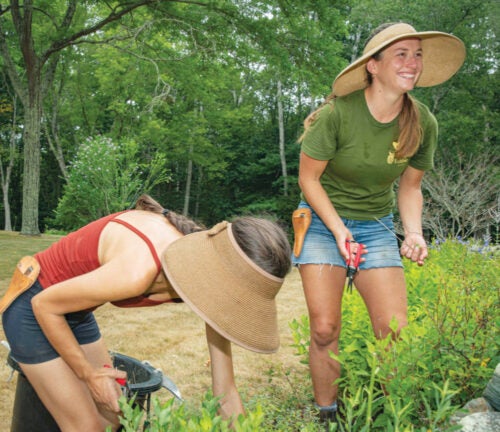
Need also came to realize that she wanted to start a landscaping business with a teaching component. She didn’t want to merely maintain clients’ gardens. She wanted them to understand the importance of connecting with the natural world by growing food organically and sustainably and incorporating native plants into their landscape designs. Need established Native Edible Designs in December 2020.
If Need’s clients aren’t environmentalists initially, they come around. Client Carolyn Lang attests to it.
“I hired Cassidy to plant a pollinator plot for me in the spring. She was patient, explaining and educating me—and wanting to do something with my yard other than grass,” Lang says. “The high point was when I had 15 monarchs swarming the plants. It’s baby steps for me as I learn more about plants and how to proceed, but with her guidance, it’s fun.”
“Outdoor spaces can be part of the world we live in—rather than something that’s separate.”
—Cassidy Need ’20
“Teaching people how to grow food, the importance of growing food, the importance of adding native plants to your landscape, and how our outdoor spaces can be part of the world we live in—rather than something that’s separate it’s all very important to me,” she says.
At URI, Need received the education she needed to channel her various interests—in business, in plant propagation and landscaping, and in sustainable organic farming—into a viable business venture.
Need notes that her URI classes in propagation, vegetable production, and fruit culture—as well as practical skills honed while she worked on the Kingston Campus as a landscape maintenance engineer—all inform her work.
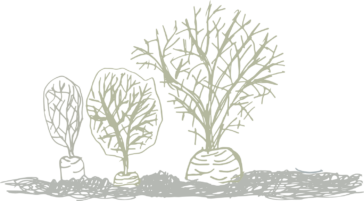
Need’s second summer in business was marked by a drought so severe that all five Rhode Island counties earned a U.S. Department of Agriculture disaster designation. The Boston Globe would later report that 2022 was Rhode Island’s 18th- driest year in the past 128 years.
Climate change and its effects aren’t theoretical for Need. She sees firsthand the strain and destruction weather events have on the environment. Still, she says, there is evidence that a shift in perspective can make a difference in the natural world.
As a student at URI, Need was part of the Sunrise Movement, a national youth political action organization working to make climate change a priority, halt the use of fossil fuels, create jobs, and raise awareness about climate issues. The group’s overarching message is that the planet’s and humanity’s fates are intertwined.
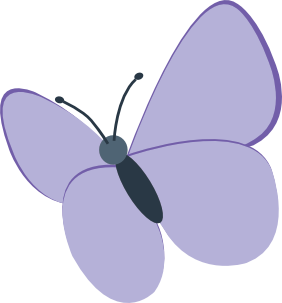
There are several monarch butterflies in the garden. Monarchs, also pollinators, benefitted from human intervention a few years back, Need notes.
“There were years when we really didn’t see many monarch butterflies at all, and then people got on the milkweed train and now they’re coming back. So, there is some hope. If people can hop on board, we can make a difference.
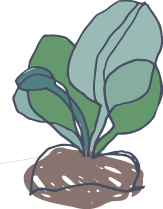
“I’ve dreamt about this business for 10 years,” Need continues. “I work 30 to 35 hours in the field, and I don’t know how many more hours at home—like you do in the beginning of any business. I’ve been in this industry for 12 years, since I was 19, and I’ve grown so much in every way possible.”
It’s an experience she’d like to share. Treating the planet with respect is treating ourselves with respect, Need says.
“My goal is getting people connected with the outside. Much of sustainability is about remembering that we’re animals, too; we’re part of the environment, and we should be doing our best to keep that connection.”
Photos: Nora Lewis. Illustration: iStock
